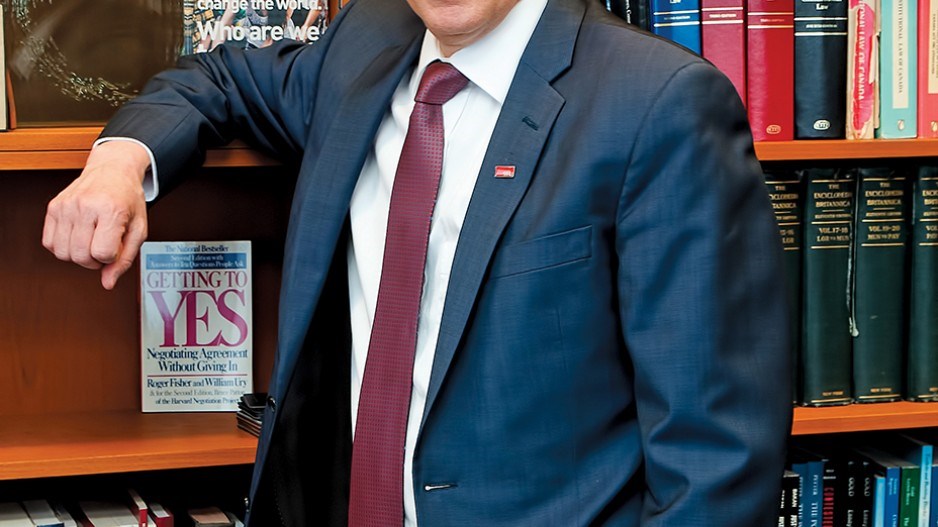As Simon Fraser University continues the rapid expansion of its Surrey campus, the school faces the challenge of ensuring an adequate supply of affordable student housing in an increasingly expensive real estate market.
According to the Fraser Valley Real Estate Board, the region set all-time records for the number of transactions and total sales values in 2016. The average prices for detached homes, townhouses and apartments all rose in 2016 in the area, the most notable being a 29.8% increase in the benchmark price for a townhouse, which went from $340,700 in December 2015 to $442,100 a year later.
While sales have dropped off in recent months across multiple jurisdictions, prices continue to rise. The benchmark price for all three categories increased last year in Surrey Central, where Simon Fraser University’s (SFU) Central City campus is located. Overall, prices have increased since 2011, with the average price for all types of dwellings in Surrey soaring from $670,370 that year to $1.05 million at the end of 2016.
At a recent Surrey Board of Trade meeting, SFU president and vice-chancellor Andrew Petter acknowledged that prices continue to rise in the city, and noted the university needs help from both the public and private sectors to build student housing as it expands.
“I’m not sure we at the university can be responsible for the entirety of that, but as we build out we’re certainly conscious of trying to make ourselves [affordable],” Petter said.
SFU is planning on adding 440 new student seats along with its Surrey campus expansion, a $126 million building to which the federal and provincial governments will contribute a combined $90 million. The five-storey, 15,000-square-metre building will house a proposed energy systems and environmental engineering program. Petter noted SFU will need to have continuing discussions with city planning staff and private developers to make sure the school has room to grow without skyrocketing rents around the campus. Opened in 2002, SFU Surrey’s 350,000-square-foot campus houses about 7,500 students.
“We’re certainly aware of affordability for our own student population and indeed for faculty and staff,” Petter said.
Petter noted the bigger issue is finding enough seats for students in Surrey, which continues to add an estimated 1,000 people to its population every month. The city is also home to the largest youth population of all municipalities in the province. A quarter of the city’s residents are under 19 years old.
“Our problem hasn’t been affordability for students; our problem has been we don’t have enough spaces for students,” he said. “The [grade point average] rate is going up and up and up – five percentage points in the last five years – so students are well qualified but they aren’t able to get in.”
Judith Robertson, manager of area planning and development for the City of Surrey, said in an email that the city worked with SFU and a local developer on a two-tower proposal on University Drive in 2008 that included a 15-storey tower for student residences.
Although the proposal received council approval in principle, the project did not finalize and was later replaced with a 37-storey market housing project that is now under construction.
“City staff members have discussed with the private sector several serious inquiries for student housing,” Robertson said. “However, no other formal applications have been submitted. In the absence of formal dormitory proposals, staff review the unit sizes that are proposed in residential developments in City Centre to ensure they meet the requirements of a range of residents including students.”
RentBoard.ca notes the average rent for a one-bedroom apartment in Surrey is between $800 and $1,010. The City of Surrey’s website says rents “are increasing and vacancy rates are decreasing” across the municipality, and have been for years. The website also notes more than 13,000 rental households in Surrey spend more than one-third of their income on rent and that an estimated 11,500 new rental units will be needed in the city over the next decade, 6,890 of which should go to low-income households. Surrey is also expected to add an estimated 300,000 people over the next three decades, which would make it the largest municipality in the province.
Brent Toderian, an urban planning consultant and former chief planner for the City of Vancouver, said if the city and SFU don’t work together on affordable accommodations, the private real estate market may come in and fill the gap, for better or worse.
“If you’re not proactively planning for student housing you can end up having opportunistic investors buying up single-detached houses in the neighbourhood surrounding your university campus and converting them into student housing,” Toderian said. “I’ve seen that happen in other cities.”
Toderian added that another major challenge facing a downtown-based university campus is adequate public transportation, something Surrey is still waiting for. Light-rail transit, which has only recently been given a tentative green light, could take until 2027 to be completed, according to TransLink’s website.
“A downtown campus can and should be more affordable for students,” Toderian said, “because it saves them significant costs compared to an auto-dependent suburban location.”




